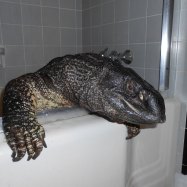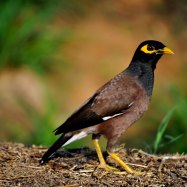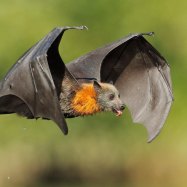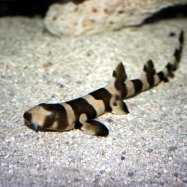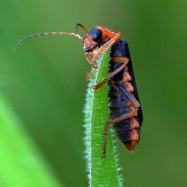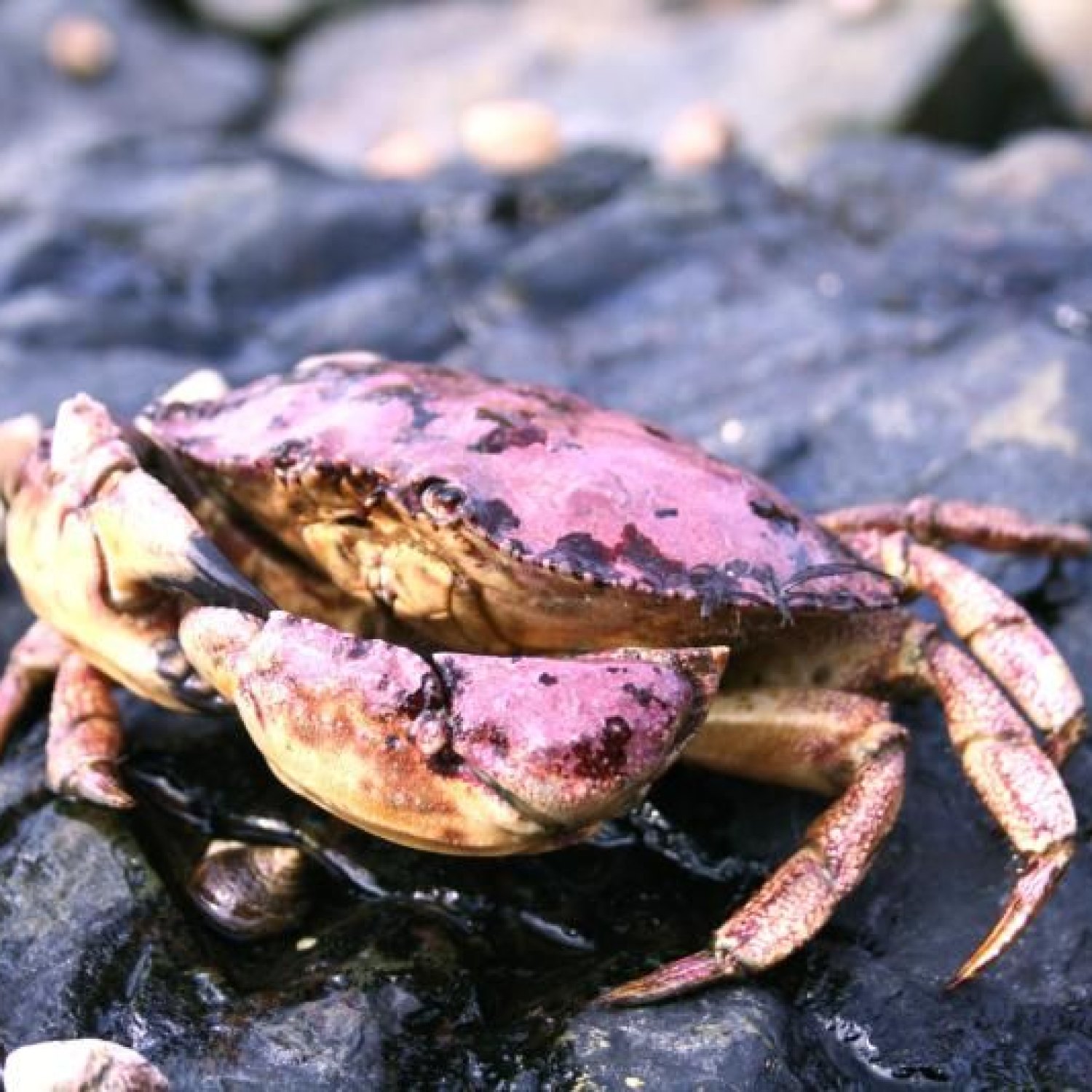
Jonah Crab
Up to 6 inches (15 cm) across the carapace
The Jonah crab, found along the Atlantic coast of North America, is a fascinating creature known for its broad and flat carapace and spiny legs. These crustaceans can grow up to 6 inches, or 15 cm, across the carapace and belong to the Cancridae family. From Nova Scotia to Florida, they are a common sight for beachgoers and seafood enthusiasts alike. Have you ever spotted one on your beach trip?
Animal Details Summary:
Common Name: Jonah Crab
Kingdom: Animalia
Habitat: Coastal waters, rocky and sandy bottoms
The Fascinating World of Jonah Crabs
The ocean is home to a diverse range of animals, and among them is the intriguing Jonah Crab. These crustaceans, formally known as Cancer borealis, are commonly found in the coastal waters of the North Atlantic Ocean. With their unique features and behavior, Jonah Crabs have captured the attention of researchers and marine enthusiasts alike. In this article, we will delve into the world of these fascinating creatures and uncover the secrets of their existence Jonah Crab.The Classification of Jonah Crabs
The scientific name of Jonah Crabs, Cancer borealis, stems from the Greek word "karkinos," meaning crab, and the Latin word "boreas," meaning North Wind. This name alludes to their habitat in the North Atlantic Ocean. These crabs belong to the Kingdom Animalia, Phylum Arthropoda, Class Malacostraca, Order Decapoda, and Family Cancridae.With their distinctive reddish-brown coloration, broad and flat carapace, and spiny legs, Jonah Crabs are a sight to behold in the ocean. They have a lifespan of about three to four years and can grow up to six inches (15 cm) across the carapace. While they may not be the biggest crabs in the ocean, they certainly are one of the most fascinating.
The Habitat and Distribution of Jonah Crabs
Jonah Crabs are primarily found in the coastal waters of the North Atlantic Ocean, from Nova Scotia to Florida. They prefer rocky and sandy bottoms, which provide them with shelter and plenty of food sources. These crabs are also known to inhabit estuaries, lagoons, and inshore bays Jamaican Boa.Their geographical distribution is closely tied to ocean currents, which play a crucial role in determining the favorable conditions for growth and reproduction. These crabs are also found in large numbers in the Gulf of Maine and the Mid-Atlantic Bight, making them an essential part of the marine ecosystem in those areas.
The Feeding Habits of Jonah Crabs
Jonah Crabs are carnivorous and feed on a wide variety of marine animals, including shellfish, bivalves, snails, and small crustaceans. They are also known to scavenge on dead fish and other decaying matter. Their powerful claws play a vital role in grabbing and crushing prey, making them efficient hunters in the ocean.Despite being omnivorous, Jonah Crabs are known as voracious predators. Their diet plays a crucial role in maintaining a balance in the marine ecosystem. They aid in controlling the population of other marine organisms, ensuring the overall health of the ocean.
The Mysterious Behavior of Jonah Crabs
Besides their unique physical features and feeding habits, Jonah Crabs have some intriguing behavioral traits that have piqued the interest of researchers. These crabs are known for their ability to camouflage and blend in with their surroundings. This adaptation helps them to avoid predators and hunt for prey effectively.Another interesting behavior of Jonah Crabs is their ability to regenerate lost limbs. Like other crustaceans, they have the remarkable ability to regenerate their claws and legs if damaged or lost due to predation or fighting. This defense mechanism not only helps them survive but also aids in their growth and reproduction.
The Economical Importance of Jonah Crabs
Apart from being an essential part of the marine ecosystem, Jonah Crabs also hold economic significance for the United States. They are commercially harvested, and their meat is considered a delicacy, often compared to that of lobsters. Their carapace is also used in the production of chitin, a natural polymer used in the medical, cosmetic, and food industries.Jonah Crabs also play a crucial role in the cultural and recreational activities of coastal communities. They are popular among fishermen and recreational divers, who seek them out for sport and food. In the Gulf of Maine alone, the commercial harvest of Jonah Crabs generates millions of dollars in revenue, providing employment opportunities for many.
The Conservation Status of Jonah Crabs
According to the International Union for Conservation of Nature (IUCN), Jonah Crabs are currently listed as "least concern" in terms of conservation. This means that their population is stable and not facing significant threats. However, there are concerns about overfishing and environmental changes that may impact their future.The North Atlantic Ocean, the natural habitat of Jonah Crabs, is facing several challenges due to human activities, such as pollution, climate change, and habitat destruction. These factors have the potential to disrupt the delicate balance of the marine ecosystem, affecting the survival of these and other marine creatures.
In Conclusion
When we think of marine animals, we often think of charismatic species, such as dolphins, whales, and sharks. However, it is essential to remember that even the smallest and lesser-known creatures play a crucial role in maintaining the balance of the ocean.Jonah Crabs, with their unique features, behavior, and economic significance, continue to fascinate and intrigue researchers and marine enthusiasts. As we continue to study and learn more about these creatures, let us also strive to protect their natural habitat and ensure their survival. Only then can we truly appreciate the wonders of the ocean and all the creatures that call it home.

Jonah Crab
Animal Details Jonah Crab - Scientific Name: Cancer borealis
- Category: Animals J
- Scientific Name: Cancer borealis
- Common Name: Jonah Crab
- Kingdom: Animalia
- Phylum: Arthropoda
- Class: Malacostraca
- Order: Decapoda
- Family: Cancridae
- Habitat: Coastal waters, rocky and sandy bottoms
- Feeding Method: Carnivorous
- Geographical Distribution: North Atlantic Ocean
- Country of Origin: United States
- Location: Atlantic coast of North America, from Nova Scotia to Florida
- Animal Coloration: Reddish-brown
- Body Shape: Broad and flat carapace, spiny legs
- Length: Up to 6 inches (15 cm) across the carapace
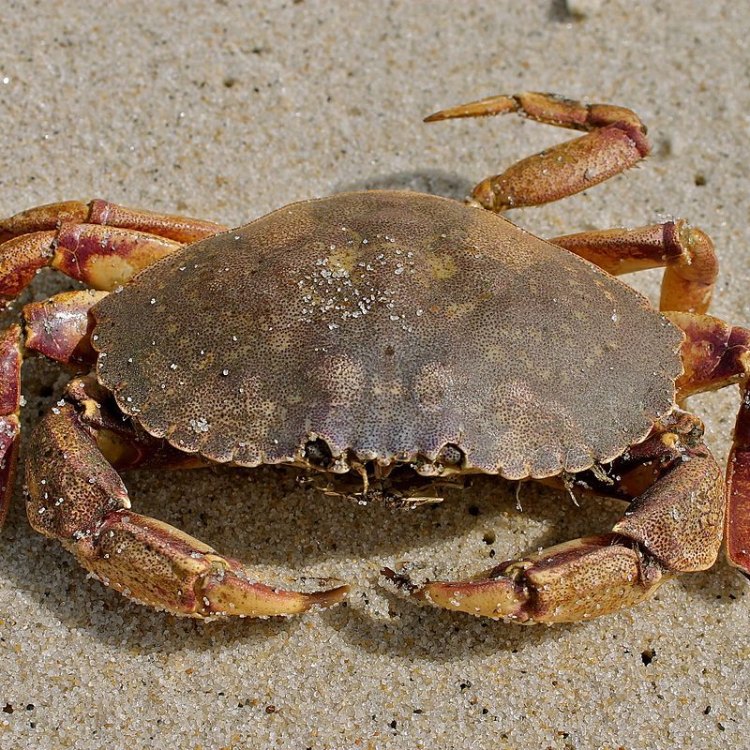
Jonah Crab
- Adult Size: Up to 10 inches (25 cm) across the carapace
- Average Lifespan: 10 to 15 years
- Reproduction: Sexual
- Reproductive Behavior: Males court females by waving their claws
- Sound or Call: No specific sound or call
- Migration Pattern: No long-distance migration
- Social Groups: Solitary
- Behavior: Nocturnal, highly territorial
- Threats: Overfishing, habitat loss
- Conservation Status: Not evaluated
- Impact on Ecosystem: Important prey species
- Human Use: Commercially harvested for food
- Distinctive Features: Large claws, spiny legs
- Interesting Facts: Jonah crabs are nicknamed 'Peekytoes' due to their habit of poking out of crevices to see what's going on around them.
- Predator: Striped bass, cod, flounder
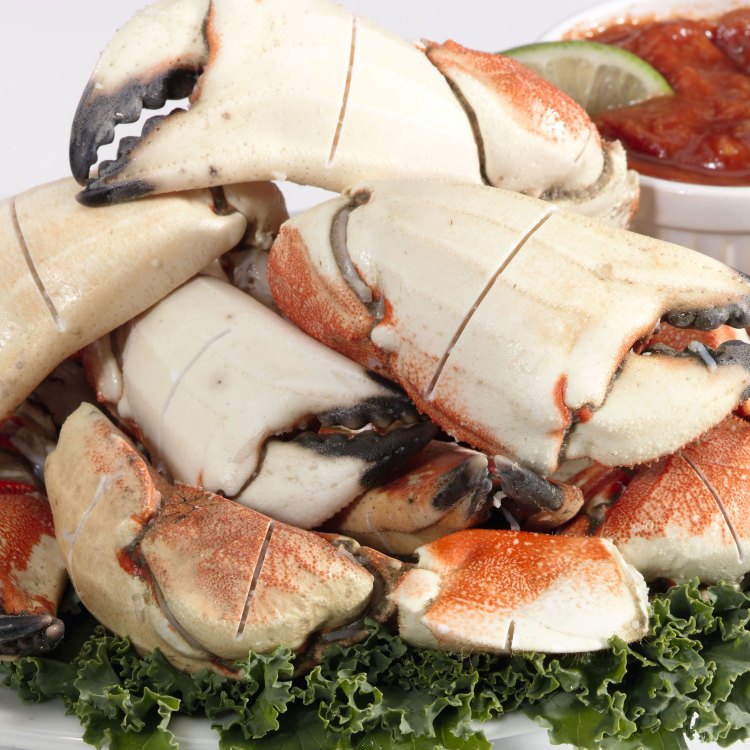
Cancer borealis
The Fascinating World of Jonah Crabs: From Courtship to Commercial Harvesting
The ocean is home to a diverse array of marine life, with each species having its own unique characteristics and behaviors. One such creature is the Jonah crab, a crustacean that may not be as well-known as its more famous cousins like lobsters and crabs, but is equally fascinating in its own right.Jonah crabs (Cancer borealis) are found along the eastern coast of North America, from Newfoundland to Florida. They are primarily found in shallow waters, from the intertidal zone to a depth of about 50 meters PeaceOfAnimals.Com. Their name is derived from the biblical story of Jonah, who was swallowed by a whale, as the crabs were often found in the stomachs of whales.
In this article, we will explore the unique features and behaviors of Jonah crabs, the threats they face, their impact on the ecosystem, and how humans use them for commercial purposes.
The Size and Lifespan of Jonah Crabs
Jonah crabs are relatively large in size, growing up to 10 inches (25 cm) across the carapace, which is the hard upper shell that protects their bodies. This makes them bigger than some of their closest relatives, such as blue crabs and spider crabs.They have a round, reddish-brown body with white spots and a distinctive pair of large claws. These claws are used for both defense and feeding, making them powerful predators in the ocean. The legs of Jonah crabs are covered in spines, giving them a prickly appearance and serving as a defense mechanism against predators.
On average, Jonah crabs have a lifespan of 10 to 15 years, although there have been reports of individuals living up to 20 years in captivity. This may seem short compared to other species of crabs and lobsters that can live for several decades, but it is still a relatively long lifespan for a crustacean Junglefowl.
Reproductive Behavior of Jonah Crabs
Jonah crabs have a sexual mode of reproduction, meaning they require both male and female individuals to reproduce. Interestingly, crabs do not have a separate reproductive system like mammals. Instead, they have a unique organ called the "gonopore," which serves as both the reproductive and excretory organ.During the mating season, which typically occurs in the summer, male Jonah crabs will court females by waving their claws in a display of strength and dominance. This behavior is known as "claw waving," and the male with the biggest and strongest claws is usually the most successful in attracting a mate.
Once the female has chosen her mate, the male will use his claws to transfer the sperm into the female's gonopore, fertilizing her eggs. Female Jonah crabs can lay up to 200,000 eggs at a time, which are attached to the underside of their abdomen until they hatch.
Nocturnal and Highly Territorial Behavior
Jonah crabs have a unique behavior pattern, being nocturnal and highly territorial. They are most active at night, scavenging for food and avoiding predators. During the day, they can usually be found hiding in crevices and under rocks to protect themselves from potential predators.Additionally, Jonah crabs are highly territorial, and they will fiercely defend their territory from other crabs. This territorial behavior is especially evident in captivity, where they will often engage in fights with other crabs if they feel their space is being invaded.
The Impact of Overfishing and Habitat Loss on Jonah Crabs
As is the case with many marine species, Jonah crabs face threats from overfishing and habitat loss. Due to their large size and tasty meat, they are commercially harvested for food, especially in the New England and Mid-Atlantic regions of the United States.Overfishing can have a significant impact on the population growth and sustainability of Jonah crabs, as it can lead to a decline in their numbers. Additionally, the destruction of their habitat, such as coastal development, pollution, and climate change, can also pose a threat to their survival.
The Role of Jonah Crabs in the Ecosystem
Although Jonah crabs may not be as well-known as some other species, they play a crucial role in the ocean's ecosystem. As opportunistic feeders, they consume a variety of small animals like mollusks, crustaceans, and worms. This makes them important prey species, providing a food source for larger predators such as striped bass, cod, and flounder.Jonah crabs also play a role in nutrient cycling in the ocean. Like other crustaceans, they are scavengers, feeding on dead and decaying organic matter. In doing so, they help to recycle essential nutrients back into the ecosystem, contributing to the overall health and balance of marine ecosystems.
Human Use of Jonah Crabs
As mentioned earlier, Jonah crabs are commercially harvested for food. They are considered a delicacy in many seafood markets and restaurants, often being compared to the taste of lobster. Their meat is typically marketed as a cheaper and more sustainable alternative to lobster.In addition to being harvested for food, Jonah crabs are also used for bait in the fishing industry. Their large claws and spiny legs are highly effective in attracting fish, making them a popular choice for anglers.
The Distinctive Features and Interesting Facts of Jonah Crabs
One of the most distinctive features of Jonah crabs is their large claws. They have a claw on each side, with the larger one being used to catch and crush prey, while the smaller one is used for finer tasks such as feeding and grooming.Another interesting fact about Jonah crabs is that they are nicknamed "Peekytoes" due to their habit of poking out of crevices to see what's going on around them. This behavior is also where they get their scientific name, borealis, which means "northern," as they are often found in rocky crevices along the northern Atlantic coast.
In Conclusion
The life of a Jonah crab is filled with fascinating behaviors and unique features, from their courtship rituals and territorial behavior to their large claws and spiny legs. However, these creatures also face threats from overfishing and habitat loss, highlighting the importance of sustainable fishing practices and conservation efforts.Next time you're enjoying a seafood dinner or out on a fishing trip, take a moment to appreciate the many wonders of Jonah crabs and their important role in the ocean's delicate ecosystem. Who knows, you may even catch a glimpse of a "Peekytoe" peeking out from a rocky crevice.
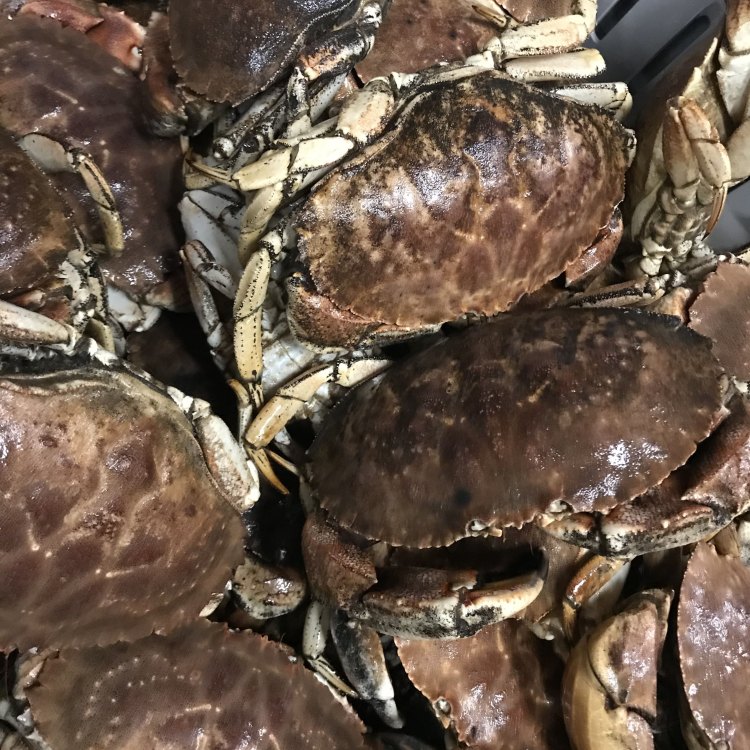
The Fascinating World of Jonah Crabs
Disclaimer: The content provided is for informational purposes only. We cannot guarantee the accuracy of the information on this page 100%. All information provided here may change without prior notice.

